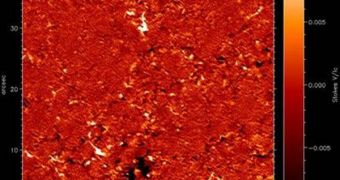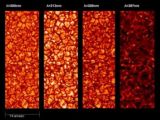Scientists at the Max Planck Institute for Solar System Research, in Katlenburg-Lindau, Germany, working together with investigators from Spain and the United States, have recently released the early results of a new study on the Sun. Gathered by the SUNRISE balloon-borne telescope, the new images of the star's surface are some of the most detailed available, and provide new insight into the complex interplay on the solar surface. This was the largest solar telescope to have ever left the Earth.
The mission was launched on June 8, 2009, from the ESRANGE Space Centre in Kiruna, northern Sweden. The helium balloon that carried the experiment had a diameter of about 130 meters, and a capacity of a million cubic meters. The telescope and its support equipment weighed in at more than six tons. Regardless of the massive weight, SUNRISE was carried to an altitude of about 37 kilometers above the planet's surface, from where it conducted its amazing observations.
During its five-day flight, the telescope recorded more than 1.8 terabytes of data, which provided the scientists in charge of analyzing the information with sufficient material to keep them busy for months. The Sun features bright magnetic structures on its surface, which astronomers knew of, but that haven't been analyzed until now. The new investigation has revealed the formations in the spectral range of 200 to 400 nanometers, which is very hard to do from Earth.
“Thanks to its excellent optical quality, the SUFI instrument was able to depict the very small magnetic structures with high intensity contrast, while the IMaX instrument simultaneously recorded the magnetic field and the flow velocity of the hot gas in these structures and their environment,” Max Planck Institute project scientist Dr. Achim Gandorfer explains. These physical phenomena have thus far only been hinted at in computer models. “Thanks to SUNRISE, these models can now be placed on a solid experimental basis,” MPS solar scientist Prof. Manfred Schussler, the co-founder of the mission, adds.
After completing its assignment, SUNRISE parachuted back to Earth on June 14th, 2009, and landed on Somerset Island, in the Nunavut Territory of Canada. The most important discovery that was made thus far in the data was the fact that the strength of the magnetic fields on the Sun was directly connected to the brightness of tiny magnetic structures.

 14 DAY TRIAL //
14 DAY TRIAL // 
